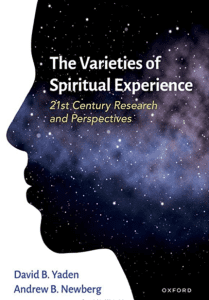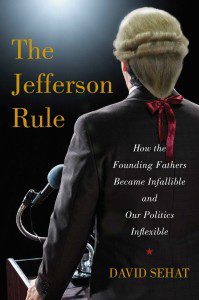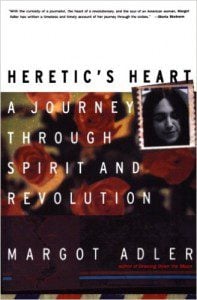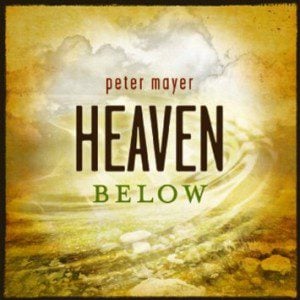Consider the following sampling of gun violence in the U.S., drawn only from the weekend of March 2-3, 2013:
- The 4-year-old son of a Jackson County, Mich., Sheriff’s Deputy accidentally shot and killed himself Saturday
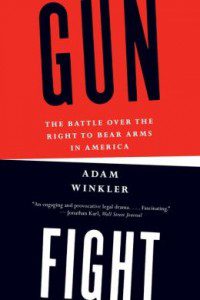 night…around 5 p.m. at the deputy’s home.
night…around 5 p.m. at the deputy’s home. - A 61-year-old man is dead after his gun apparently accidentally discharged, striking him once in the upper body, at the St. Charles Sportsman’s Club in Waldorf, Md. Officers were called Saturday at 9:23 a.m.
- Toni Voss, 27, was shot and killed by her boyfriend in Adams, Wis., early Saturday. 28-year-old Coleman Dybul called authorities around 1:50 a.m., saying he was asleep in bed at a residence when Voss startled him, prompting him to shoot her with a shotgun he kept near his bed. Authorities arrested Coleman on suspicion of first-degree reckless homicide.
- One man is dead and another in stable condition following separate shootings Sunday that took place an hour-and-a-half apart in Oakland, Calif. The fatal shooting occurred about 11:06 a.m. after someone shot an unidentified man. The second shooting took place at 12:21 p.m.
- A 16-year-old is fighting for his life after he was shot Saturday night in Richmond, Va. Neighbors and businesses owners say a teen party may have been going on in a nearby vacant building. Witnesses said the victim was shot three times.
- A 15-year-old boy is in critical condition after being shot in the hip in northeast Wichita, Kan., early Sunday morning. Police said the boy was walking down the street just after midnight with a friend when a car drove up behind them. Several individuals got out of the vehicle, and one pulled a black revolver.
- A 24-year-old man was killed in a drive-by shooting in Miami on Sunday afternoon. A witness described hearing a “high-powered rifle.” Neighbors said gunshots are heard in the area almost every day, and that they are considering buying guns themselves for protection.
- Three teenage boys were injured, one critically, in what authorities say was a drive-by shooting in South Los Angeles. A shooter opened fire Saturday night in the Vermont Square neighborhood, hitting two 15-year-olds and one 17-year-old.
All of these shootings from one recent weekend alone. From a larger range of three month, according to Slate’s gun-death tracker, an estimated 2,517 people have died as a result of gun violence in America since the Newtown massacre on December 14, 2012.
—Joe Nocera, “The Gun Report: March 4, 2013”
I invite you to consider your response to the question, “How has gun violence touched my life or the the life of my close friends and family?” Speaking for myself, many of my relatives are hunters, and I have spent enough time in the country to know the necessity of guns in some areas for hunting. My dad kept a handgun hidden in a drawer in my parent’s bedroom throughout my childhood. That gun is still in my mom’s house in South Carolina to this day. Two of my father’s sisters, who are in their 70s and 80s respectively, regularly go to the firing range, and have concealed weapons permits. And if you met them, I don’t think any of you would suspect that they are almost always packing heat for reasons of self-defense.
Similarly, although many people don’t know this fact about me, I taught riflery for many years at a summer camp in North Carolina. For quite a few summers, I spent up to three hours a day a few days a week for nine weeks in a row teaching ten- to fifteen-year-old boys how to safely and accurately shoot a .22 Long Rifle. Although I had previously only shot a BB gun once or twice, I was a trusted member of the camp staff, the Camp Directors needed someone responsible to teach riflery, so I got recruited. For what it’s worth, I’m quite a good shot.
In addition to a high level of gun ownership in my family, gun violence has also touched the life of my close friends and family. A few years ago my first cousin was depressed, and committed suicide with a gun. I wonder if he would still be alive if he hadn’t had such easy access to such lethal weapons.
A year ago from this past Wednesday, there was a shooting at an Episcopal Day School in Florida where the husband of one my closest friends from college worked. A Spanish teach, who had been fired, entered the principal’s office with an AK-47-style assault rifle and nearly 100 rounds of ammunition, killed the principle, and then himself. A similar workplace shooting happened a few years ago at an office building in Baltimore where Magin’s first cousin works.
Again, I invite you to pause and consider, “How has gun violence touched my life or the the life of my close friends and family?”
~ ~ ~
One of the questions asked in the wake of December’s mass shooting at Sandy Hook Elementary School was, “Has our country finally suffered enough gun violence to create the political will to tighten our gun regulations?” For me, “enough” was not the tragedy in Newtown. Enough was 13 years earlier: the Columbine High School shooting, which resulted in the deaths of 12 students and one teacher before the shooters committed suicide. I was a junior in college at the time.
For others of you perhaps “enough” was on April 16, 2007 when 32 people were killed at Virginia Tech. Or in 1991 when 23 people were killed by a gunman in a Luby’s Cafeteria in Killeen, Texas. Or 1984 when 21 people were shot and killed in a McDonald’s in California. Or in 1966 when 14 people were shot at the University of Texas in Austin. Or perhaps enough for you was when a loved one was killed or injured from gun violence.
A significant number of famous U.S. citizens have also been killed from gun violence: President Abraham Lincoln, President James Garfield, President John F. Kennedy, Senator Robert F. Kennedy, Martin Luther King, Jr., Malcolm X, Harvey Milk, John Lennon, musician Marvin Gaye, Ennis Cosby (son of comedian Bill Cosby), James Jordan (father of Michael Jordan), and Yetunde Price (sister of Venus and Serna Williams). This short list is far from exhaustive and does not begin to mention the much longer list of those who survived gun violence or committed suicide.
These names and events are only a small reminder that as we consider where to go in the wake of the Newtown tragedy, we need to be aware of how many lives have been lost or irrevocably altered by gun violence before Newtown with far too little change in gun regulations. Our nation’s history of gun violence is one major reason that I’m not sure that it can ever be “too soon” to call for more responsible gun regulations in the wake of gun violence. After so much relentless carnage year after year, calling for more responsible gun regulations can never come soon enough.
Despite our nation’s bloodstained history of gun violence, our collective resistance to gun regulation has remained relatively intractable. But there are exceptions. Two months and one day after MLK’s assassination and only one single day after the assassination of RFK, the U.S. Congress passed the Omnibus Crime Control and Safe Street Act of 1968, the first federal gun control law in thirty years. With the assassination of RFK, “The political will to enact gun control shift literally overnight.” This historical precedent is one of many reasons that convince me that the longer we wait the wake of gun violence to attempt to pass regulation, the lower the likelihood of passage. Inaction favors the status quo. We find ourselves almost three months after Newtown and another 2,517 people have died of gun violence in this country just since mid-December, and far too little has changed about the causes contributing to this high death rate.
Agreeing about “common sense” responses to preventing gun violence seem frustratingly difficult. For example, the most famous (or infamous) alternative to increased gun regulation is that we should prevent gun violence by having more guns: more concealed weapons, arming teachers with guns, and essentially no limits on private gun ownership. And as some of you may have seen the news on Friday that, “South Dakota became the first state to enact a law explicitly authorizing school employees to carry guns on the job.” And while I do think there is some truth in the old saying that a “Tough on Crime” Conservative is a Liberal who has been mugged, I also believe that, at our best, we choose to act and structure our society not out of fear and anxiety, but out of compassion, generosity, and hope.
Along these lines, there was a fascinating article in recently in New York Times about the growing number of people who freely admit that they only have guns because they know their neighbors do: “I’d love to see all guns destroyed. But I’m not giving up mine first.” So although any attempt to prevent gun violence must take into consideration that there are already an estimated 300 million guns already in private hands in this country, we should also keep in mind that the percentage of U.S. homes with a gun has seen a four-decade decline: “The rate has fallen from an average of 50 percent in the 1970s to 35 percent in the 2000s.” As conservative commentator David Frum has tweeted, the “Gun industry’s business model is same as talk radio’s: sell more & more to fewer & fewer customers.”
So, yes, there is a significant vocal minority of gun owners, whose perspective and rights must be taken into account. And there are legitimate reasons for and paths to maintaining responsible gun ownership now and in the future. However, I’m unconvinced by those individuals and groups who seeing large number of gun already out there, and say that we might as well just do nothing. Despite there being 300 million guns “out there,” the shockingly high rates of gun violence tell me that we have to start moving in a saner, more responsible direction of gun regulation, even if the journey will be a long one.
At the same time, it is important to name that a call for sensible gun regulations is not an extreme position; it is, at minimum, a moderate, compromise position. To give some context for those who feel like the gun regulations being currently debated in legislatures across our country are extreme, consider that some activists for the prevention of gun violence would like to see complete domestic disarmament:
the banning of the sale of all guns to private parties coupled with a buyback of those on the street…. Collectors can keep their guns as long as they remove the firing pin or fill the barrel with cement. Gun sports can be allowed — in closed shooting ranges. And hunters (if they pass background checks) can be allowed to have long guns with no scopes, which are not sporting. [There are] nations [ — Great Britain, New Zealand, and Norway and a few others] where most guns have been removed from private hands — and often even from those of the police.
As one columnist wrote about this comparison, “having few guns does mean that few people get shot. In 2008-2009, there were 39 fatal injuries from crimes involving firearms in England and Wales, with a population about one sixth the size of America’s. In America, there were 12,000 gun-related homicides in 2008.”
One primary impediment many people would cite to even taking baby steps in the direction of domestic disarmament is the Second Amendment. I spent a fair amount of time in my post this past December giving evidence for why both myself and many legal scholars (who know far more than I do about the Constitution) think that in 2008 the Supreme Court got it wrong in the case District of Columbia v. Heller, which ruled — for the first time in U.S. history — that the Second Amendment to the United States Constitution protects an individual’s right to possess a firearm for self-defense. In contrast, previous cases had leaned toward the militia theory of the Second Amendment, which emphasizes that any interpretation of Second Amendment gun rights were highly contingent upon a well-regulated militia. In this line of thinking, if you want to exercise your Second Amendment rights, then you should sign-up for the National Guard, which is arguably the contemporary equivalent of our founders’ “well-regulated militia.”
It is is also important to point out that this landmark 2008 shift in the legal landscape in District of Columbia v. Heller was a 5-4 split decision in which the justices were divided along ideological lines. William Brennan, a former Supreme Court Justice, used to ask his new law clerks, “What is the most important rule of constitutional law?” After watching them fumble for answers, he would hold up one hand with his fingers outstretched: ‘Five,’ he would say; ‘You need five votes to make a majority on the nine-member Court. In order words, replacing only one conservative justice could make a very different interpretation of the Second Amendment the law of the land.
Beyond the Second Amendment, though, my larger concern with moving toward anything like domestic disarmament would be the difficulty of avoiding the law of unintended consequences. For example, stricter gun laws, even with careful planning, could contribute to higher rates of mass incarceration (through stricter sentences for gun-related crimes) and a black market similar to the legislative travesty that was Prohibition and is the Drug War.
With that major caveat in mind, where should we go from here? I will move toward a conclusion for now with the following list of five potential steps of where we could go from here in working to prevent future gun violence. First, I am using the phrase “preventing gun violence” intentionally. Sometimes terminology does matter, and strategically calling for legislation to “prevent gun violence” is more persuasive to a larger number of people than the phrase, “We need more gun control.”
Second, instead of starting with a debate about the Second Amendment, start with sharing your personal experience with guns and how gun violence has touched your life and the life of those you love.
Third, visit the “Prevent Gun Violence” page on the website of the Unitarian Universalist Legislative Ministry of Maryland (http://uulmmd.org/issues/prevent-gun-violence) — or a similar organization in your state — to learn more about pending legislation, discern whether you feel led to contact your representatives, and see if there are others ways you would like to get involved.
Fourth, consider the following plan of action for prevent gun violence, which was developed by a Professor of Health Policy at Harvard’s School of Public Health and Director of Harvard’s Injury Control Research Center and Youth Violence Prevention Center. After extensive study, this expert concluded that:
The crucial first step is to create a [federal] agency that has the power to regulate firearms as a consumer product. Like the National Highway Traffic Safety Administration, which requires cars to have seat belts, collapsible steering columns, and shatterproof windshield, the firearms agency could require that firearms are childproof, that pistols have magazine safeties, and that serial numbers be tamper resistant…. It is crucial for this federal agency to have the power…to respond quickly to changes in technology and the marketplace.
The regulatory agency should actively promote new technology that will make society safer. For example, ‘smart’ or personalized guns that cannot be fired except by authorized users can help prevent unintentional injuries of children and adolescents and limit criminal use of stolen guns. Advances in the technology of less lethal firearms — such as electric stun phasers, tranquilizer guns, or bean-bag guns — could meant that police, civilians, and even criminal shootings would be less likely to result in death or serious injury.
The agency should ensure the creation of a national firearm injury surveillance system and each year should investigate in depth a large sample of shootings. It should make the data available to researchers and provide funding for research.
To reduce criminal gun use, there should be licensing of gun owners and registration of handguns…. A one-gun-per-month law should be created at the national level to reduce gunrunning. To eliminate the secondary-sales loopholes, all gun transfers should be required to go through licensed dealers, with attendant background checks on purchasers. Licensed dealers should face greater scrutiny from government regulators.
The fifth and final point I offer for your consideration is the possibility of requiring gun liability insurance, which the more I read about — including recent articles in The Economist, The New York Times, Slate, NPR, and Forbes — is more legitimately possible than I thought when I first heard about it, which does not mean that passing any such regulation would be easy. Consider that:
The real problem with gun ownership is that they involve “externalities,” which is economist-speak for the fact that your gun may be used to hurt others. For instance, when Nancy Lanza purchased her Bushmaster AR-15, she probably weighed the benefits of owning the gun — the joy of ownership — with the price (about $800). But it’s unlikely she considered the loss, pain and grief that might follow if it were used by her son to kill 26 innocents. When people fail to consider the broader social costs of choices like buying a gun, they’re more likely to do them, and society suffers.
There has been far too much suffering from gun violence in our nation. We can and must do better for ourselves. We can and must do better for our children.
For Further Reading
- Carl Gregg, “Politics of the Broken Hearted: Gun Rights and Gun Responsibilities,” available at http://www.patheos.com/blogs/carlgregg/2012/12/politics-of-the-broken-hearted-gun-rights-and-gun-responsibilities/.
- Geoffrey Canada, Fist, Stick, Knife, Gun: “Long before President Barack Obama praised his work as ‘an all-encompassing, all-hands-on-deck anti-poverty effort that is literally saving a generation of children,’ and First Lady Michelle Obama called him ‘one of my heroes,’ Geoffrey Canada was a small and scared boy growing up in the South Bronx. His childhood world was one where ‘sidewalk boys’ learned the codes of the block and were ranked through the rituals of fist, stick, knife, and, finally, gun. In a stunning pairing, acclaimed comics creator Jamar Nicholas presents Canada’s raw and riveting account, one of the most authentic and important true stories of urban violence ever told.”
1 Joe Nocera, “The Gun Report: March 4, 2013” — I abbreviated this material slightly. The full original article is available at http://nocera.blogs.nytimes.com/2013/03/04/the-gun-report-march-4-2013.
2 For more stories, see “How many people do you know who have been shot?” available at http://www.washingtonpost.com/blogs/liveblog/wp/2013/03/07/magazine-how-many-people-do-you-know-who-have-been-shot/.
3 On the anniversary of the Florida shooting, see “One year later, Dale Regan’s legacy lives on a majestic old oak tree,” available at http://jacksonville.com/news/columnists/2013-03-05/story/one-year-later-dale-regans-legacy-lives-majestic-old-oak-tree.
4 For a list of “Mass Shootings in the U.S.,” see http://www.nytimes.com/interactive/2012/12/14/nyregion/The-shooting-at-the-Sandy-Hook-Elementary.html?ref=nyregion&_r=0.
5 For a list of famous U.S. citizens shot or injured from gun violence, see “Appendix B” to David Hemenway, Private Guns, Public Health.
6 “The political will to enact gun control shift literally overnight.” — Adam Winkler, Gunfight: The Battle over the Right to Bear Arms in America, 251.
7 “South Dakota became the first state to enact a law explicitly authorizing school employees to carry guns on the job” — “A State Backs Guns in Class for Teachers,” available at http://www.nytimes.com/2013/03/09/us/south-dakota-gun-law-classrooms.html?_r=0&pagewanted=all. This article concludes that, “a couple of recent episodes could leave some people unsettled about firearms in schools. A maintenance worker at an East Texas school that plans to allow its staff to carry guns accidentally shot himself during firearms safety training last month. And a police officer assigned to patrol a high school in a town north of New York City after the Newtown shooting was suspended this week because he accidentally fired his gun in the hallway during school hours.”
8 “I’d love to see all guns destroyed. But I’m not giving up mine first.” — “For Some, Owning Guns Doesn’t Necessarily Mean Liking Them,” available at http://www.nytimes.com/2013/03/10/us/gun-owners-arent-always-gun-lovers.html?pagewanted=all.
9 300 million guns — “How to Think About Guns: A New Freakonomics Radio Podcast,” available at http://www.freakonomics.com/2013/02/14/how-to-think-about-guns-a-new-freakonomics-radio-podcast/.
10 “Share of Homes With Guns Shows 4-Decade Decline.” available at http://www.nytimes.com/2013/03/10/us/rate-of-gun-ownership-is-down-survey-shows.html?pagewanted=all.
11 David Frum quoted in “Analysis: Fewer U.S. gun owners own more guns,” available at http://www.cnn.com/2012/07/31/politics/gun-ownership-declining/index.html.
12 gun regulations being currently considered in legislatures — “After Rancorous Debate, Colorado Senate Advances Strict New Measures on Gun Control,” available at http://www.nytimes.com/2013/03/10/us/colorado-senate-advances-strict-gun-control-measures.html?ref=us.
13 “Gun Control? We Need Domestic Disarmament,” available at http://www.huffingtonpost.com/amitai-etzioni/gun-control-we-need-domes_b_2718536.html. http://www.bbc.co.uk/news/magazine-19641398.
14 “having few guns does mean that few people get shot” — “The gun control that works: no guns,” available at http://www.economist.com/blogs/lexington/2012/12/gun-control.
15 For further reflect on the Second Amendment see, “Putting the Second Amendment Second,” available at http://www.slate.com/articles/news_and_politics/jurisprudence/2008/03/putting_the_second_amendment_second.single.html. See also “Repeal the Second Amendment,” available at http://americamagazine.org/issue/repeal-second-amendment.
16 The William Brennan quote is adapted from Winkler, Gunfight, 273.
17 public health expert — David Hemenway, Private Guns, Public Health, 224-226.
18 On gun liability insurance, see these articles (the quoted material is from NPR):
- http://www.npr.org/blogs/money/2013/01/31/170700177/should-gun-owners-have-to-buy-liability-insurance
- http://www.forbes.com/sites/johnwasik/2013/02/21/the-myth-of-gun-liability-insurance/
- http://www.economist.com/blogs/democracyinamerica/2012/12/gun-control-0
- http://www.nytimes.com/2013/02/22/us/in-gun-debate-a-bigger-role-seen-for-insurers.html?pagewanted=all&_r=0
- http://www.slate.com/blogs/breakingviews/2012/12/18/congress_should_push_for_mandatory_gun_insurance.html.
The Rev. Dr. Carl Gregg is a trained spiritual director, a D.Min. graduate of San Francisco Theological Seminary, and the minister of the Unitarian Universalist Congregation of Frederick, Maryland. Follow him on Facebook (facebook.com/carlgregg) and Twitter (@carlgregg).
Learn more about Unitarian Universalism:
http://www.uua.org/beliefs/principles/index.shtml



